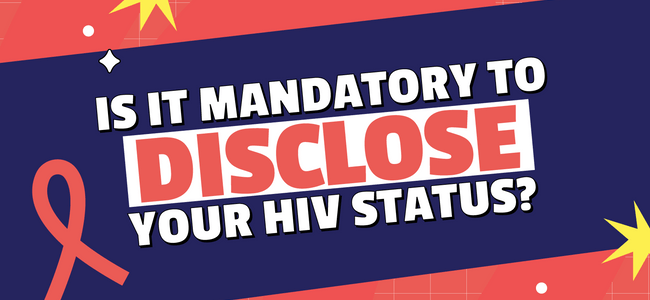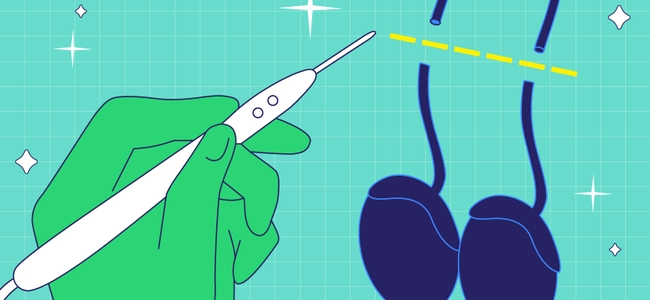A vasectomy is a quick and mostly painless surgical procedure. It is done under local anesthesia, while you are awake, and it takes 10–30 minutes. Based on the type of procedure, a vasectomy can be done in a clinician’s office or at a health-care facility, and you should be able to go home on the same day.
How to prepare for a vasectomy
Before the day of the procedure, it’s important to set up an appointment with your health-care provider.
During this appointment, you will also undergo counseling that should help you to decide whether a vasectomy is a good fit for you. Information, including the risks and benefits, what to expect during and after the procedure, and why it is important to use backup contraception for the next three months after the procedure will be shared with you.
The counseling process allows you to make an informed decision, including changing your mind any time before the procedure takes place. If you change your mind, you still have the right to receive alternative contraceptive information and services. You can either decide right away or go home and think about it.
Your health-care provider will also perform a general physical examination (including a genital exam) and take your medical history. Make sure to mention any medication that you are taking or treatment you are having.
If you decide to go ahead with the procedure, you will be required to provide your consent. In some health-care facilities, both you and your health-care provider will be required to sign an informed consent form.
Once you have given consent, you can set a date for the procedure. You will be advised how to prepare for the procedure as follows:
– Wear comfortable clothes.
– Take any medication provided by the health-care provider.
– Maintain good hygiene. Shower before going for the procedure and clip any pubic hair that may block access to the scrotum.
– Make transport arrangements to and from the health-care facility.
The next step is to visit your health-care provider for the vasectomy procedure.
Vasectomy techniques
There are two types of vasectomy techniques – the no-scalpel and the incision (7).
No-scalpel vasectomy
Also known as the “reaching the vas” technique, the no-scalpel vasectomy method involves making a tiny puncture that reaches the tubes (vasa deferentia) that carry sperm to the penis. The tubes are then tied and cut or sealed.
This procedure takes 20 minutes, at most.
It is becoming the standard vasectomy procedure across the world and unlike in the incision technique, only one incisions is made in the scrotum, and the special anesthesia technique used requires a single needle puncture instead of two.
No stitches are needed to close the skin. The no-scalpel method takes less time, results in less bruising and pain, and there are fewer infections and hematomas (collection of blood in a way that causes swelling) at the site of the incision. In general, this procedure is known for healing quite fast and without complications.
Incision vasectomy
The incision-based vasectomy is a quick procedure that requires a visit to a health-care provider, but no overnight stay in a clinic or hospital. It takes 20–30 minutes and local anesthesia is used to numb the scrotum. The health-care provider will make two incisions to the scrotum and then cut and remove a short piece of each tube.
The remaining cut ends of the vas are then tied or cauterized (blocked shut with heat or electricity) to prevent sperm from entering the seminal fluid. Since sperm cannot come out, the female partner will not get pregnant.
Whichever method is used, the vasectomy will block sperm from passing into the semen, but sperm may stick around in the tubes for a few months. You should use another method of contraception (like a condom) for three months until the sperm is no longer present (8).
Does a vasectomy hurt?
A vasectomy procedure is generally not painful. According to the Advanced Urology Vasectomy Clinic, you may feel a little pinch during the administration of the numbing agent (before it takes effect). Some men have reported feeling a tugging sensation when their vasa deferentia are being pulled to the surface. But this only lasts for a few seconds.
What should I expect after a vasectomy?
You may experience some post-procedure pain, bruising, and swelling. This can be managed with pain medication and will usually disappear in two days. The swelling can be managed by using an ice pack on the affected area. You can also wear tight pants to hold the scrotum in place.
Plan for one to two days of recovery.
The punctured sites will usually heal on their own. However, you may have bandages that will need to be changed. Any bleeding should subside within 24 hours.
A person who has had a vasectomy can resume normal daily activities within two days. However, for about a week, you should avoid doing strenuous activities, having sex, and doing anything that will lead to ejaculation. Ejaculating too soon after a vasectomy might open up your incision and increase your risk of infection and other post-vasectomy complications.
How soon after a vasectomy can I have sex?
This varies from person to person. While you must not have sex for 48 hours after a vasectomy, you should be able to have protected sex within a week after the procedure. You can have unprotected sex three months after a vasectomy or once a semen analysis has shown that there is no sperm in your seminal fluid.
When you start having sex again, you and your female partner must continue using another form of contraceptive until your health-care provider advises you to stop.
Vasectomy reversal
This is the procedure done to undo a vasectomy. The reversal is done for various reasons, including a change of mind, loss of a child, remarriage, or to treat chronic testicular pain after a vasectomy.
A vasectomy reversal is done by reconnecting the tubes that carry sperm from the testicles to the seminal fluid. Once the reversal is done, sperm will once again be present in your semen, and you could get someone pregnant. While reversals do not generally result in any serious complications, there are a few risks including
– infection at the site of the surgery. Like with any surgery, you might get a post-procedure infection, but this is easily treated with antibiotics.
– chronic pain. Persistent pain is a rare post-reversal risk.
– bleeding in the scrotum. This may result in a hematoma (collection of blood in a way that causes swelling). Avoid this by following the post-procedure instructions given by your health-care provider, including getting adequate rest, using scrotal support, and applying an ice pack after the surgery. It is also important to find out if there are any blood thinners that you will need to avoid before and after the surgery.
Vasectomy reversal success rate
A vasectomy reversal does not guarantee you a pregnancy. The possibility of pregnancy after a vasectomy reversal depends on various factors, including the amount of time that has passed since you had the vasectomy (the longer the time, the less successful); whether you had fertility issues before the vasectomy; the age of your partner; and your surgeon’s training and experience in doing reversals. Depending on these factors, the possibility of a pregnancy after a reversal can range from 30–90% (9).


